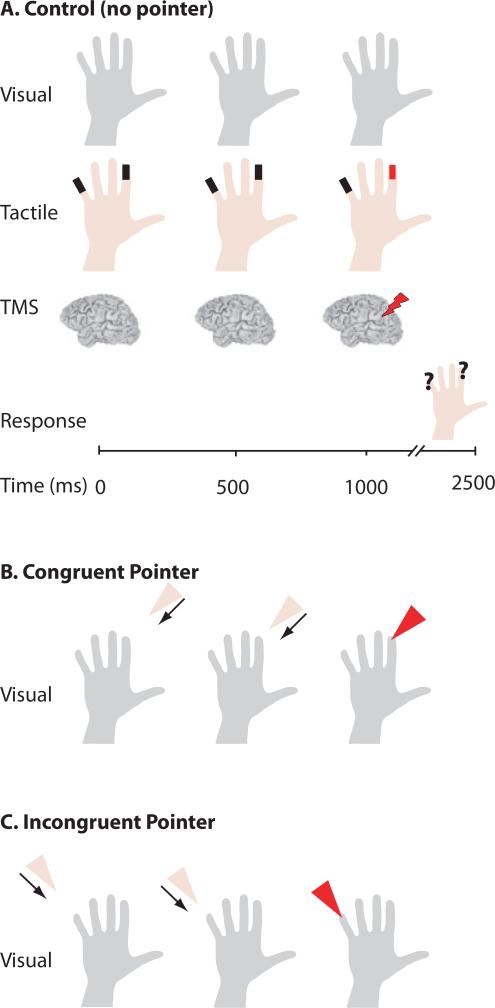Fig. 1.
Experimental design. (A) Control (No Pointer) trial. Top row: subjects viewed a static image of a hand throughout the trial. Second row: tactile stimulators (black rectangles) were attached to the tips of D2 and D5. A mechanical tap (red rectangle) was delivered to either D2 or D5 1.0 s after the start of the trial. Third row: on some trials, TMS was delivered 1.0 s after the start of the trial. Fourth row: subjects reported the location of the tap. (B) Congruent Pointer trial. The visual display contained a moving pointer that contacted either D2 or D5 (the same finger that received the tactitle stimulation) 1.0 s after trial start (arrows for illustration only). All other trial events are identical to control trials. (C) Incongruent Pointer trial. The moving pointer contacted the fingertip that did not receive tactile stimulation.

